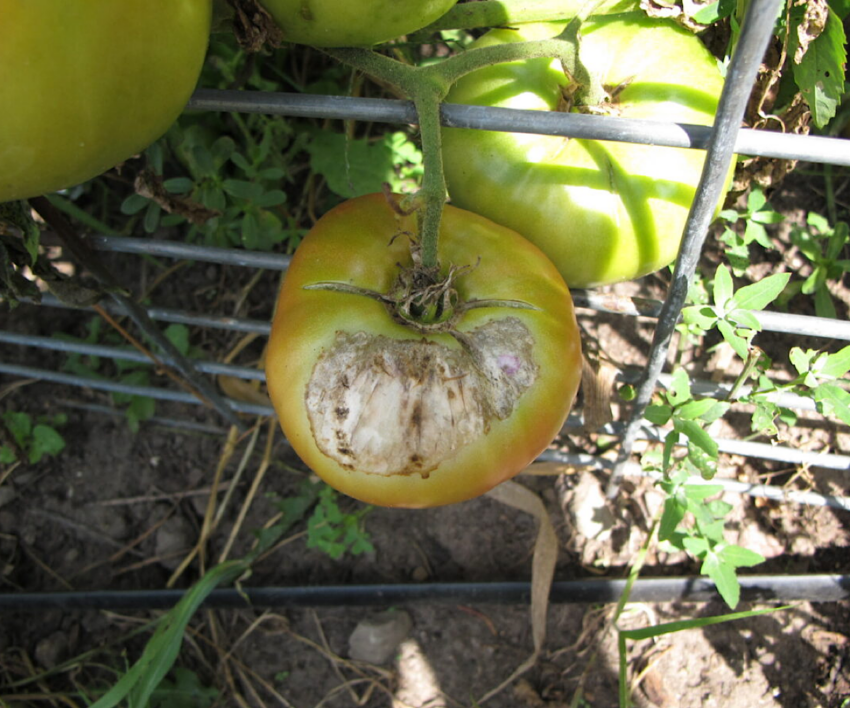There is really nothing that compares in flavor to a homegrown tomato. For those living in urban areas, there are certainly some specific challenges. These but these limitations can often be overcome with a little research and imagination.
Here are some ideas to consider if you want to experience the flavor of home-grown tomatoes, but have felt limited before due to living in an urban environment without a large garden plot.

Jump to: Best Location for Pots | Design in Small Spaces | Watering Considerations
This post may contain affiliate links. As an Amazon Associate, I also earn from qualifying purchases. You can read our disclosure information here–
Optimal Location for Tomatoes
Requirements for Sunlight:
The first thing to consider is the tomato’s need for “full sun”, which at a minimum is six hours daily and preferably eight or more. Tomatoes may still grow in partial shade but the yield will be much less.
Full sun does not equate to “hot” weather however. If the tomato could design it’s perfect growing conditions it would be a place where the average temperature was around 75 degrees F and the leaves and plant were exposed to sunlight 8 hours a day.
Sunscald is a problem with too much sun
Intense, direct sunlight for extended periods during very hot weather can be a problem for tomatoes, especially on ripening or green tomatoes.
Sunscald first appears as light patches on green or ripening fruit. As the patches grow they often blister and become grayish-white (see photo below). You can still eat tomatoes with sunscald as long as mold hasn’t set in. Just slice off the light patches.

If your location has the potential for sun-scald there are some preventative steps you can take:
- Choose heat-tolerant varieties;
- Don’t over-prune tomato plants; the leaf cover provides shade for the fruit;
- Determine the right trellis system for your site. They all have pros and cons but if your area has intense sun you may want to look at a cage which is less exposure than staking or trellising (Check out different types tomato trellis systems to find the right ones for you and your garden.)
- Keep plants healthy and treat signs of tomato disease as soon as possible. Tomato wilts, blights, and leaf spot cause plants to drop foliage, which expose fruit to excess sunlight.
- provide a lightweight shade cloth to protect fruit from over-exposure;
- Try a topsy-turvy type of system that grows tomato plants upside down.
Tip: If you do start to see sunscald you can harvest the tomatoes and let them finish ripening on a kitchen counter. The taste will not be as good because the sugars haven’t had a chance to develop, but they will still be worth salvaging.
Design around your Space Limitations:
If tomatoes are grown in a backyard garden (aka in the ground) without a trellis system they will naturally sprawl as they mature. T
Sprawling, or vining, tomato varieties are called “indeterminate” varieties. The great majority of tomatoes are indeterminates and if you want to grow them in the garden, they will definitely need to have a trellis or other support system. Allowing them to sprawl on the ground invites disease and spoilage.
Some tomatoes, however are determinate varieties, which means they will only grow to a certain size (often around 2-3 feet). Determinate tomatoes are easier to grow in pots, especially if you are a beginner.
They tend to have sturdy stems and don’t need an elaborate trellis system or cage. They can also grow free in the backyard garden without a trellis.
Be aware of the difference in fruiting between determinate and indeterminate tomatoes however. Determinate tomatoes produce a lot of fruit over a discreet time period (usually around 3-4 weeks).
Indeterminate tomatoes will vine and produce fruit until frost, but it will not be a large flush of fruit as in the determinate types.
Typically it balances out and you get around the same amount of tomatoes with determinate and indeterminate tomato varieties, but over a different time period.
This list of good determinate tomatoes for growing in containers will help you get started.
Watering Considerations:
Growing tomatoes in small spaces often means you will be growing in containers. For container growing, you need to be prepared to water often, sometimes more than once a day.

Some gardeners have rigged up self-watering systems, and some will use sprinklers.
If you are watering containers by hand, be sure you have thought out how you will get water to your plants. Carrying large buckets of water from the house to the containers is not fun.
Large containers are heavy and difficult to move, so consider using a plant dolly at the beginning of the season when you’re first getting started.
Exposure to strong winds is another consideration around watering. Wind causes the plants to dry out much more quickly, especially if your home is in a wind tunnel. Use protection over vulnerable young plants if you are in a windy area.
Enjoy!!
One of the nice things about gardening is that you get to try again the next year. So don’t get discouraged. All gardeners started out as beginners and learned by trial and error and checking out blog posts!
Have fun and enjoy the fruits of your labor!
If you like my articles about cooking and gardening, subscribe to my weekly newsletter, where I share free recipes and gardening tutorials.


[…] *http://tomatoheadquarters.com/news/spring-planning-tips-for-growing-the-best-tomatoes-in-an-urban-ga… […]
[…] you have a small or no garden, you too can enjoy home grown produce with pots and containers.If you only have a small garden but would still like to grow your own vegetables, don't despair as m…de range of vegetables from peas to potatoes. There are now many varieties that are specifically for […]